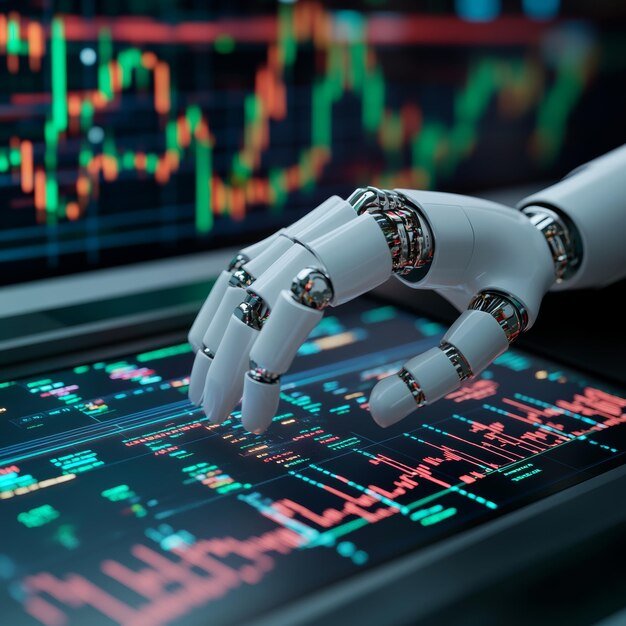Artificial Intelligence, or AI for short, is no longer a myth of the future but a reality and is incorporating changes into industries, thereby rebuilding the concept of the job market. From automating routine tasks to driving decision-making processes, AI is rewriting the way businesses get work done. While this technology brings enormous opportunities, it does beg certain questions: about job displacement and the skills needed within the workforce of the future. Let’s begin to wade into how AI is influencing the job market and what that means for workers and employers alike.
1. How AI Is Changing Work
AI is smoothing processes in various industries, making them speedier, more efficient, and more inexpensive. Here is how it plays its part in different sectors:
Mechanization of Routine Tasks
The tasks that used to keep humans busy are now performed by AI. It includes:
Entry and Processing of Data: AI systems study and put data into sequence at a rate of speed and with accuracy incomprehensible for human humans.
Customer Service: The chatbots and virtual assistants address customer inquiries day and night, therefore reducing the requirement for human agents.
Smarter Decision-Making
AI-driven analytics enables business organizations to make better decisions. For instance:
Healthcare: AI helps in disease diagnosis and forecasts patient outcomes.
Finance: Algorithms analyze market trends for investment advice or fraud detection.
2. Jobs Susceptible to Automation
While AI creates certain opportunities, it is also a threat to many other jobs. Routine, mechanical, and repetitive jobs are those that may easily be automated.
Examples of Vulnerable Jobs:
Administrative Roles: The work of secretarial and clerical employees is increasingly mechanized.
Manufacturing and Assembly Line Work: AI-driven robots can complete tasks such as assembling a product or its packaging with increased efficiency.
Retail and Customer Support: Lesser need for human workers is created by automated checkouts and AI-powered support systems.
3. The Emergence of New Avenues of Employment
While AI is snatching jobs, on the other side, AI has also given way to jobs that were neither heard of nor existed ten years ago. This also goes to mean that as the technologies advance, so does the demand for niche skills.
Emerging Jobs:
AI and Machine Learning Specialists: Professionals entrusted with the design, development, and deployment of AI systems.
Data Scientists and Analysts: Talents who interpret complex data into business insights.
Cybersecurity Analysts: systems’ protection from cyber threats is vital in the increased usage of AI.
Jobs Supporting AI Integration:
AI Trainers: people who train AI systems to recognize patterns and make decisions.
Ethics Officers: those who ensure that applications of AI are used responsibly and equitably.
4. Skills Needed for the Future Workforce
Upskilling and reskilling are key to adapting to the changing job market wrought by AI. It’s everybody outcompeting each other in a mad dash for the in-demand skills.
Key Skills for an AI-Driven Future:
Technical Skills: Understanding AI, machine learning, and data analytics.
Soft Skills: Creativity, problem-solving, and emotional intelligence-machines can’t replace these qualities.
Ability to Adapt and Learn Continuously: As technology changes, so does your skill set.
Lifelong Learning
It’s easier now than ever to pick up new skills and relevant knowledge through online courses, boot camps, and certification programs, paving your way into an AI-dominated world.
5. Weighing Benefits and Challenges
AI can enhance productivity and innovation but is not without its challenges that must be addressed if the transition is to be equitably managed.
Business Opportunities
Smarter Processes: The automation of tasks frees the companies to work on strategic goals.
Cost Efficiency: AI saves labor costs while reducing the risk of errors.
Improved Customer Experiences: AI-driven personalized services lead to customer satisfaction.
Challenges to Workers:
Job displacement: Workers in vulnerable jobs must think about changing professions.
Inequality: The access to training in AI is not equitably distributed, and neither are the resources.
Ethical Concerns: There’s many concerns regarding the privacy, bias, and fairness in the decisions made by AI
6. Preparing for an AI-Driven Future
Governments, businesses, and schools all have critical parts to play in preparing the workforces for the outcome of AI.
What Is to Be Done?
Invest in Education and Training: Provide workers with the skills they need while promoting lifelong learning.
Pursue Policies of Fair Transition: Support programs for displaced workers along with investment in job creation in new sectors.
Conclusion
AI is definitely changing the job scenario; there are opportunities and threats related to it. Though a few jobs might get obsolete, many new and interesting careers are emerging. Continuous learning and adaptability of workers will definitely help them progress in this evolving job landscape. All one needs to do is not look at AI as a threat but take it as a tool that would extend human potential and ignite innovation.




